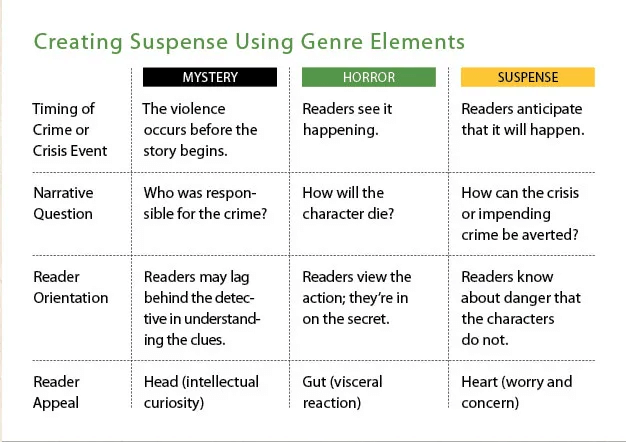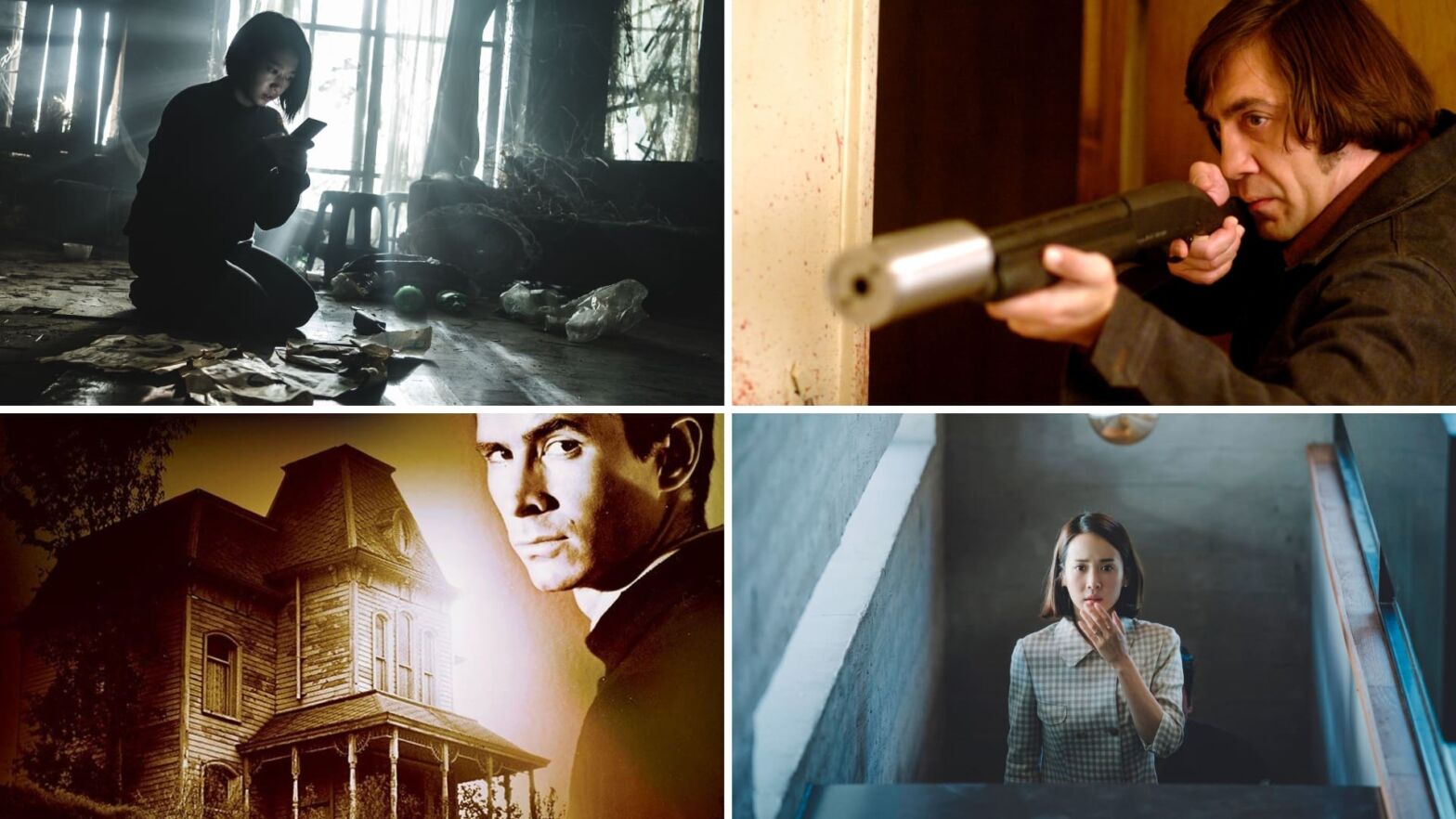There are few things that can keep an audience more engaged in a film than suspense. But what is suspense, exactly? That feeling of intense anticipation can be found in various genres and have an audience leaning forward with their eyes glued to the screen. Understanding what suspense is and how it differs from other states like shock and mystery is essential to putting an audience on edge. In this article, we’ll take a look at the elements of suspense that distinguish it from anything else. We’ll also take a look at a few basic ways to create it in the story you are telling.
What is Suspense?
First, let’s define suspense
Suspense is a unique state that many filmmakers aim to put an audience in. Before we dive into the various elements of suspense, we must first establish our definition of suspense.
SUSPENSE DEFINITION
What is suspense?
Suspense is a state of uncertainty or excitement regarding a specific outcome. Suspense is typically coupled with feelings of anxiousness and anticipation. In storytelling, it is used to keep an audience deeply engaged in what is occurring. It can be found in various genres, including comedies, but it is most commonly used in thrillers. Mystery and shock are often confused with suspense, but have different key characteristics that differentiate the terms.
Elements of suspense:
- Time
- Uncertainty
- Clear stakes
- Pay off (the outcome)
Define Suspense
Suspense vs. mystery and shock
The term “suspenseful” is commonly used to describe examples of various movie genres like mystery, horror, even action. But all too often, suspense is mistakenly attributed to works of mystery or shock.
What’s the difference? The differences between mystery and shock lie in information and perspective. Consider this chart that breaks down these different genres and how the same elements are used differently.

What is suspense vs. mystery vs. horror
In mystery, audiences are often given a limited amount of information. This limited perspective allows them to intellectually dissect what has already happened. That's the key, the timing of the event here is in the past.
Most horror and action films operate on shock. Shock allows action or an event to unfold in real time in front of the audience. The audience perspective is also more subjective, allowing them to experience the story with a character. They also typically know the same information that the character does.
Movies that operate on suspense give the audience a more objective perspective. Sometimes, this objective perspective allows the audience to know more information than characters do.
This is otherwise known as dramatic irony.
The result is anticipation as we wait for the character to learn the truth.
Alfred Hitchcock is a master at creating suspenseful moments because he fully understood the differences between shock, and mystery. In the video essay below, Entertain The Elk dives into how Hitchcock creates white-knuckle tension with the elements we discussed above.
What is the definition of suspense according to Hitchcock?
Suspense can be executed in a variety of creative ways in a variety of genres. However, there are a few fundamental elements of suspense. Let’s take a look at these elements that create that feeling of anxious anticipation.
Related Posts
How to Setup Suspense
Introduce instability
Suspense cannot be created by throwing the audience directly into chaos or turmoil. The chaos has to develop in order for the suspense to grow. A key part of executing this is by establishing stability followed by instability.
An example of this can be found in Inglourious Basterds, one of Quentin Tarantino’s best films. In the opening scene, a family on a simple French farm is taking on their daily chores. This is their stability.
Suddenly, a Nazi motorcade approaches. Here, Tarantino introduces the instability. What ensues is one of the most suspenseful opening scenes in recent cinema.
In our video analysis of this opening scene below, we breakdown Tarantino’s directing style and the elements of suspense that Tarantino uses to keep the audience completely hooked.
How Tarantino Keeps You Hooked • Subscribe on YouTube
Introducing instability creates a desire in the audience for a return to stability. However, the road back to stability is filled with moments of suspense. Which leads us to our next element: uncertainty.
What is Suspense Used For?
Create uncertainty
If there is no uncertainty, there is no suspense. The audience should believe the outcome could go either way.
Another great example of this can be found in Bong Joon-ho’s Parasite. When the Kim family executes a mischievous plan to get the whole family a job working for a wealthy family, they get a maid fired in the process.
In the most pivotal moment of the film, the fired maid mysteriously appears at the door to retrieve something in the basement. What is it? Why is she here? The Kim family and the audience do not know. This is the uncertainty.
This moment sets up one of the best plot twists of the last decade. In this video, we break down how Bong Joon-ho sets up the suspense with this moment.
What does suspense mean in Parasite • Shifting genres
Both instability and uncertainty are key elements of suspense. But they are also characteristics of mystery. What differentiates the two? Like we discussed above, in suspense, audiences typically know information that a character in the story doesn't. This information commonly raises the stakes.
Suspense in Movies
Raise the stakes
To develop general uncertainty into suspense, the audience must know what is specifically at stake. Understanding the stakes creates an emotional investment in the outcome.
If we don't care if the hero is successful or not, there is not suspense.
In No Country for Old Men, one of the Coen Brothers’ best films, the stakes are set early on. The antagonist hit man, Anton Chigurh, is introduced as a psychopath who has no hesitation for murder.
And when he stalks the same motel complex where our protagonist Llewelyn Moss is hiding, we understand what’s at stake — Llewelyn’s life. Chances are the audience has garnered some sympathy for him at this point.
He's a relatively innocent man with a charming marriage. And he even has a conscience — returning to the scene to give a dying man water. In other words, we care about whether Llewelyn can escape with his life.
No Country for Old Men • Motel Shootout Scene
Making it clear to the audience that a character’s life is at stake heightens their emotional investment and elevates a scene’s suspense. When we do not understand what is at stake, we are simply left with uncertainty and mystery.
Related Posts
Finding Resolution
Suspense needs a pay off
A suspenseful scene creates anxiety and apprehension in the audience. The greater the anticipation, the more important the pay off. A payoff acts as a resolution whether or not it is good or bad for a character.
In Orson Welles’ famous opening for a Touch of Evil, we know there is a bomb in the trunk. Our anticipation is fueled by dramatic irony. Will the car explode or not? And we wait an excruciating 3+ minutes for the answer.
Had the bomb not gone off, the audience would still have felt the suspense. However, it would not have helped keep them engaged in the ongoing story.
Define suspense • A ticking bomb
When done effectively, suspense is one of the most potent ways to engage an audience. It takes patience and intentionality to do it right. Suspense is often a slow burn that utilizes all these elements but tailors them to a specific story. Take a look at the story you are telling and look for opportunities for suspense to hook your audience.
UP NEXT
The Best Thriller Films of All Time
Suspense is an integral part of various film genres. However, it is perhaps most important to that of the thriller genre. To learn more about suspense and how to effectively create it, watch and analyze some of the best thrillers of all time which you can check out in our next article.
Up Next: Best Thrillers Ever →
Showcase your vision with elegant shot lists and storyboards.
Create robust and customizable shot lists. Upload images to make storyboards and slideshows.
